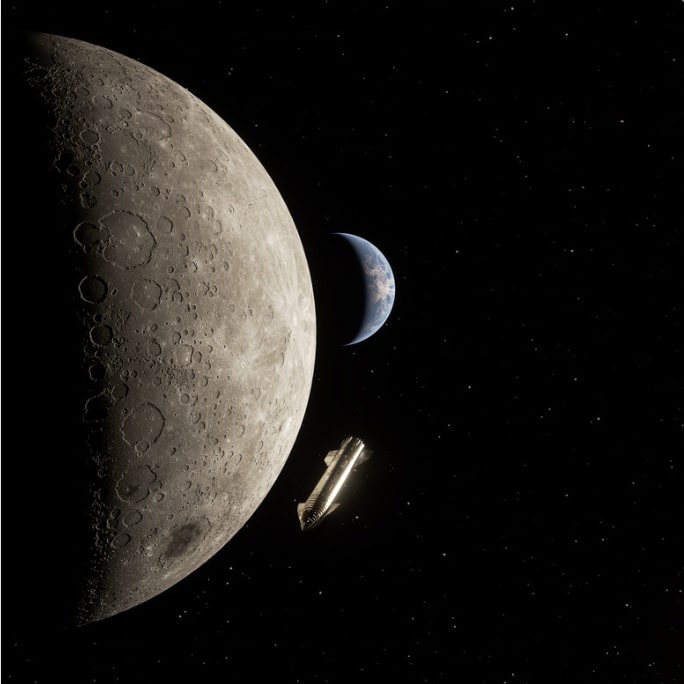Sixty years after President Robert F. Kennedy outlined his administration’s plan to land American astronauts on the moon as part of its Apollo program, NASA is getting ready to send humans back to the Moon as the main goal of its Artemis program. One of NASA’s biggest challenges is its many-pronged plan for deep space exploration. NASA’s Artemis program plan contains 63 detailed objectives which are broken down into four parts. The overall project – back to the Moon and then on to Mars – includes a blueprint for what NASA calls “sustainable exploration” wherein we go back – to stay – and learn how to live and work on another world – in a fashion that can be sustained long term instead of the short stays that NASA conducted during Apollo.
Why go back now? The rock samples obtained by Apollo astronauts in 1961 taught scientists much about the geologic history of the earth and the Moon. David Kring, a lunar geologist at the Center for Lunar Science & Exploration in Houston, Texas, believes what can be collected by today’s astronauts could tell us even more given that new locations will be visited. The first landing site for humans is going to be at the Moon’s south pole – a place that no human – or robot – has yet to visit.
As emphatically stated by NASA, the Artemis program will send the first female and first person of color to explore the lunar surface. Unlike Apollo, NASA will collaborate with commercial and international partners to create the first long-term presence on the lunar surface. This time an effort is being made to engage all of society in this renewed program of exploration.
As for how Artemis will proceed, the four overall areas of the Artemis plan are:
- Science
- Transportation and habitation
- Lunar and Martian infrastructure
- Operations
To achieve these objectives, NASAwill use the full array of tools and resources at the disposal of the U.S. and its Artemis partners: telescopes, satellites, robots, spacecraft – and, of course, humans.
“We need a roadmap with staying power, and through a collaborative process, we’ve identified a core set of defined objectives to achieve our exploration goals with our partners,” said NASA Deputy Administrator Pam Melroy. “These objectives are both practical and aspirational, and we were gratified by the thoughtful contributions of our workforce, industry, and international partners who will join us in shaping our future together.”
Following Artemis I’s successful launch last November, the agency is busily preparing for the next Artemis launch planned for late 2024. Unlike Artemis I which had no crew, this second mission will send astronauts to orbit the Moon. NASA plans to use elements from Artemis I and II to test systems and concepts for the mission of Artemis III which will land humans on the Moon.
“It’s easier in a sense that you have the astronauts to provide feedback,” Orion Spacecraft Program Planning and Control Office Chief of Staff Stu McClung said. “It gets a little more difficult in the sense that now you have astronauts to bring home safely and so some of the discussions you’ll have and what the risk trades that you’ll do along the way are different because I clearly don’t want to ever lose a vehicle, but I definitely don’t want to lose the crew, so that modifies the decision-making process to some extent.”
Obviously, NASA wants to keep its astronauts healthy, safe – and productive. To do so NASA will use advanced robotics, telemedicine, vital sign tracking, and in-depth mental and physical health evaluations in the following ways:
- Evaluate, understand, and mitigate the impact of a long deep space orbital mission on crew health and performance, followed by partial gravity surface operations on the moon.
- Validate the readiness of all systems and operations to support astronauts’ health and performance for the initial Mars exploration.
- Demonstrate the capability of integrated robotic systems to support and augment the critical work performed by crew members on the surface and in orbit.
Kurt Vogel, director of space architectures in the office of the NASA Administrator, said, “We wanted to shape objectives to guide the upcoming missions, as opposed to previous approaches, which consisted of building elements and capabilities first to support the campaign. The community provided enormously helpful inputs, and we’re ready to move toward the next steps in architecture planning.”
After establishing bases on the Moon NASA hopes to prove that it can effectively use these outposts to move on to the human exploration of Mars. In so doing, NASA plans to evaluate any off-planet resources discovered during Artemis that warrant additional scientific, exploration – and even commercial research. NASA will also focus on using existing resources, such as equipment left behind from previous missions, while minimizing the impact of landing humans on lunar and Martian surfaces. Taking everything together, NASA seeks to find new ways to reduce mission expenses, enhance efficiency, and expand overall exploration and utilization capabilities.
Again, it is clearly worthwhile to ask why we want to go back to the Moon since many people would say “been there, done that”. The last time we did this was several human generations ago. Our ability to conduct these activities has dramatically expanded in the past 60 years – as has our understanding of the scientific and commercial potential of the Moon. We return now armed with knowledge and a thirst to resume the task of exploration – this time “for all humanity”.






